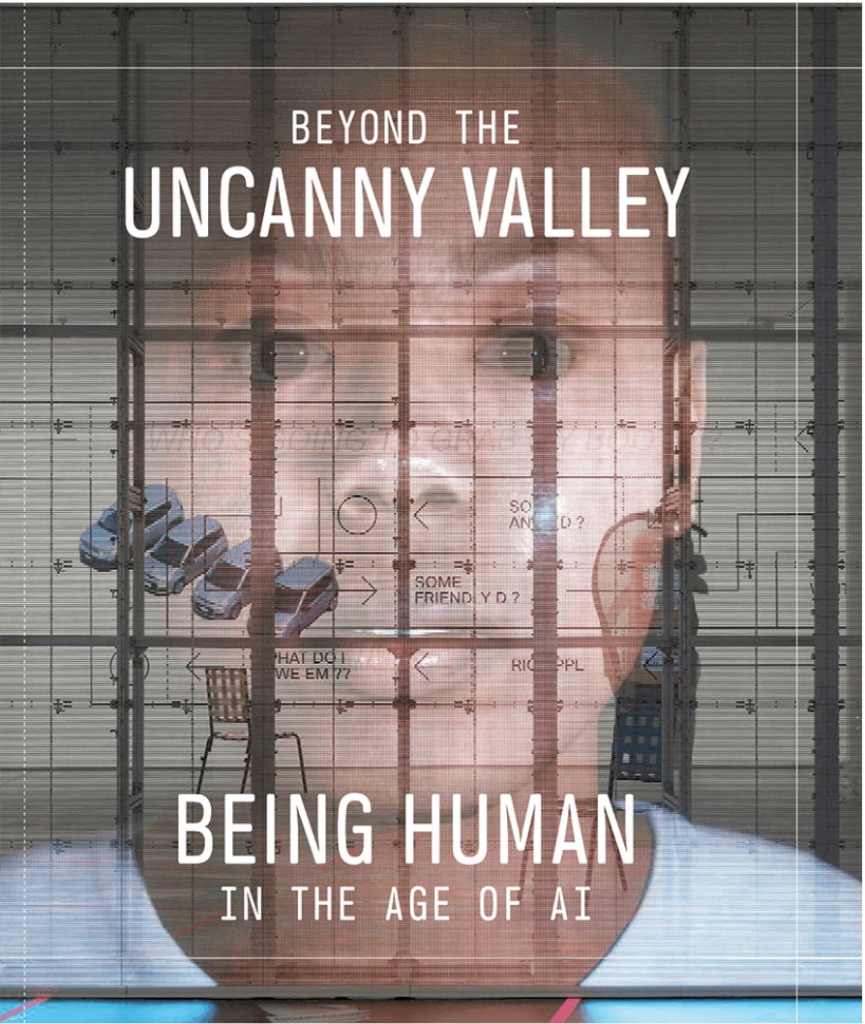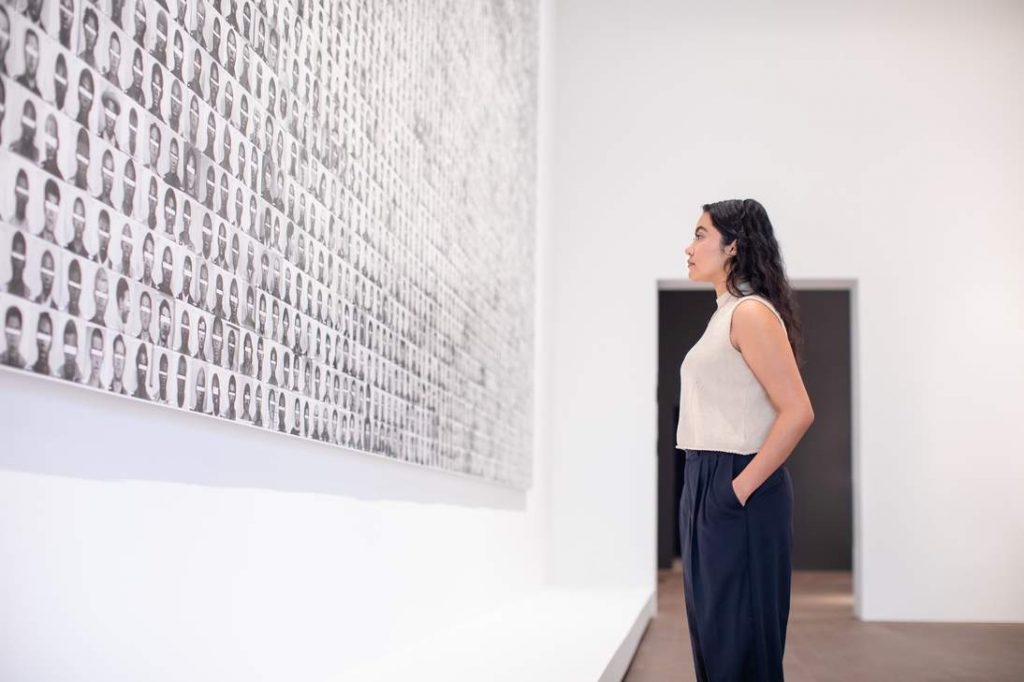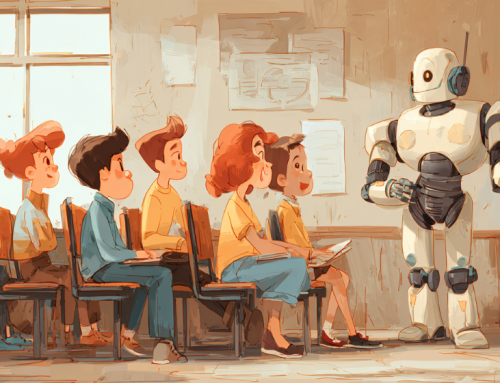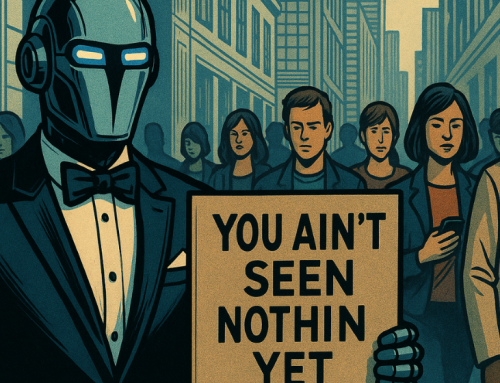
Image: Zach Blas, “The Doors,” 2019. Installation view from “Uncanny Valley: Being Human in the Age of AI,” de Young, San Francisco, 2020. Co-commissioned by Edith-Russ-Haus für Medienkunst, Germany; de Young Museum, USA; and Van Abbemuseum, Netherlands. Courtesy of the artist. Image © Gary Sexton Photography
‘Uncanny Valley: Being Human in the Age of AI’ Exhibit Takes on Evil AI at de Young Museum
An exhibit at the de Young Museum in San Francisco serves not only as an exploration of AI-run programs that can be abusive—like facial recognition that gets it wrong and algorithms that discriminate—but it also digs deeper into the cost of letting machines make decisions that can have damaging social effects.

The cover of the ‘Uncanny Valley’ book.
The term “Uncanny Valley” comes from Japanese robotics engineer Masahiro Mori. In 1970, he tracked how people responded to machines based on their degree of resemblance to people. The exhibit, however, takes this to the latest area of discomfort, tracking how algorithms leverage “tribal” identities and nationalism in politics, among other areas of exploitation.
“Extremist and discriminatory tropes thought to be buried in history reemerged as a partisan body—an ideological Frankenstein floating to the surface of the political landscape like the monstrous islands of plastics in the Pacific Ocean. Even before the 2016 U.S. presidential election and Brexit, it had become clear that this development was driven by statistical machines, today simply called artificial intelligence, or AI. This type of machine intelligence has traditionally been applied to decrease uncertainty in fields as diverse as climate science, healthcare, and gaming—areas that benefit from the prediction of potential risks. But introduced into the social sphere, the predictive mechanisms of AI have instead wreaked havoc and augmented uncertainty and instability. In doing so, they have triggered the resurgence of a (primarily male) ‘hero’ driven by anger and a thirst for recognition—a pseudo Achilles of Greek mythology, yet stripped of the tragic appeal that made him legend.”
The results have been attacks on democracy, the spread of disinformation and misinformation that’s dangerous during a pandemic and “black box” problems that leave people vulnerable to inscrutable AI conclusions.
The museum’s description of the exhibit, too, underscores the irony of people employing technologies that exploit the human condition for money.
“With human data having surpassed oil as the most valuable resource on Earth, the development of new AI is largely propelled by the profitability equations of the industries and policy makers that increasingly rely on—and fund—it, with the purpose of immediate application. In this context, the uncanny valley of the twenty-first century is emerging as the focus of a new form of frontierism, whose sole aim is an ever deeper and more tailored capturing of our attention—its hidden mechanisms geared toward behavioral design and automation that reconfigure the formation of subjectivities, societies, economies, and ecologies in ways we are only beginning to understand.”
A 224-page publication on “Uncanny Valley” is being sold for $45 by the museum. The exhibit will run through June 2021.
read more at deyoung.famsf.org

Installation view of Trevor Paglen “They took the Faces from the Accused and the Dead… (SD18)” in “Uncanny Valley: Being Human in the Age of AI” at the de Young museum. Courtesy of the artist, Altman Siegel Gallery, San Francisco. Photography by Gary Sexton.







Leave A Comment